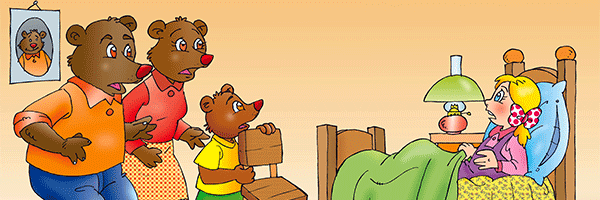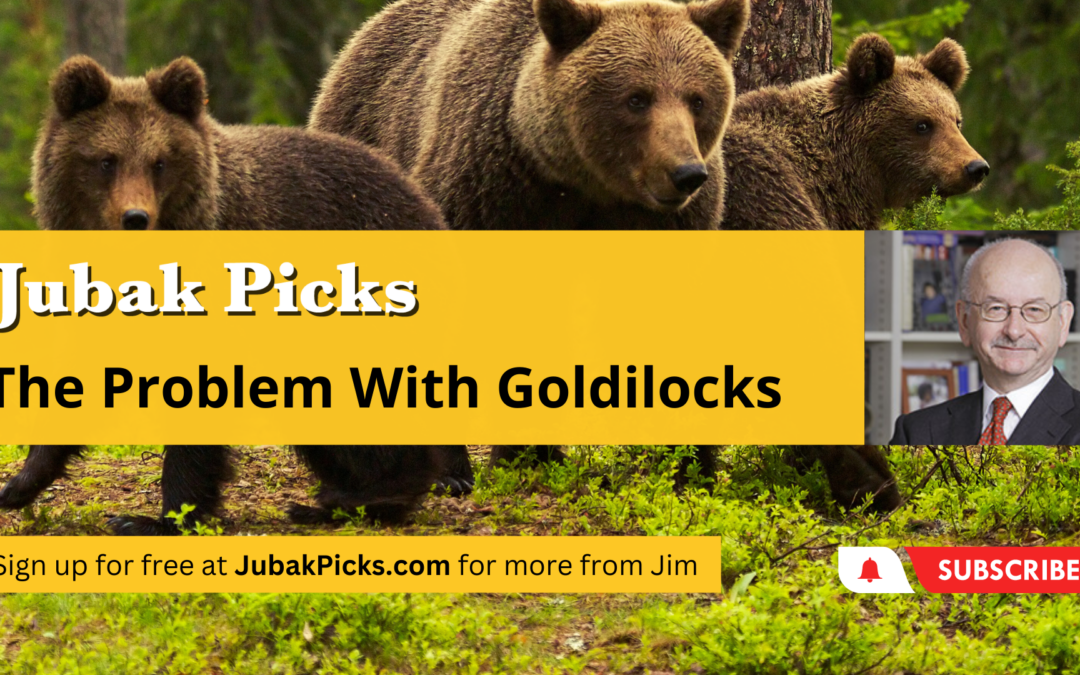
June 28, 2023 | Daily JAM, Short Term |
Investors and traders have been riding a Goldilocks market that has rested on a belief that all news is good news. There are signs that belief is facing challenges that might, just might, lead to a replacement of Goldilocks with some other narrative. Right now, the golden child is still resting peacefully at the Three Bears’ house with a stomach full of “just right” porridge, but sentiment in the last week has at least been willing to countenance the possibility that some bad news is bad news. And, I can see a lurking suspicion in the market that may be in the weeks to come all news if bad news.

May 11, 2023 | Daily JAM, Morning Briefing |
The Producer Price Index rose 0.25% in April from March and at a 2.3% rate year-over-year, the Bureau of Labor Statistics reported today, May 11. This index measures prices at the wholesale level–changes at that level eventually show up in the prices that consumers pay so they’re an indicator of the direction of future consumer inflation. Economists surveyed by Bloomberg had expected producer prices to rise 0.3% in April on a monthly basis and 2.5% on a yearly basis. In March, producer prices slipped 0.5% on a monthly basis and rose 2.7% on a yearly basis. The annual 2.5% rate is the lowest annual increase in producer inflation in more than two years. So in these numbers, we’ve got clear evidence that inflation is falling. But, also this morning, initial claims for unemployment for the week ending May 6 rose 22,000 to a seasonally adjusted 264,000 claims. That was above expectations from economists surveyed by Reuters for 245,000 initial claims for unemployment. The number of workers filing new claims for unemployment hit a 1-1/2-year high.

April 6, 2023 | Daily JAM, Mid Term, Videos |
Today’s topic is The Problem With Goldilocks. This Goldilocks market is dependent on three things: there will be no recession, interest rates will stabilize after one more May hike from the Fed, and we’ll get falling inflation. These three factors are necessary for the porridge to be not too hot and not too cold. The problem? I don’t see how these three factors exist simultaneously. Falling inflation but no recession? I don’t see how we get to lower inflation without something at least close to a recession. I think we need a recession in order for the Fed to stop rate hikes. Oil isn’t helping the situation as OPEC+ voted to cut oil production for a year, and energy-reliant stocks are already showing the effects. Energy prices don’t immediately factor into the Fed’s decision-making, since the Fed focuses on core inflation, which excludes oil and food, but eventually, oil prices affect the market as a whole. Goldilocks may not be in immediate danger of being eaten by the bear, but I wouldn’t sell her an insurance policy.

October 14, 2021 | Daily JAM, Short Term |
You can see yesterday’s stock rally and its continuation today as a return of the Goldilocks market. Yesterday, for example, inflation, if you look just at core inflation–that is without food and energy prices–looked strong enough to make the Federal Reserve very cautious about removing monetary stimulus from the economy, but core inflation wasn’t so strong that it sent up warning flares. And today, the drop in initial claims for unemployment to 293,000 (for the week ended October 9) for a new Pandemic low argues that the economy continues to improve but that the economy in general and the job market in particular are neither too hot nor too cold In other words a Goldilocks scenario.

June 3, 2021 | Daily JAM, Short Term |
Employment numbers today suggest that we could get a Goldilocks May job report tomorrow. The ADP Research employment survey said U.S. private employers added 742,000 jobs in May. That’s the most in seven months. But it is slightly below the 850,000 projected by economists surveyed by Bloomberg.

July 26, 2019 | Daily JAM, Morning Briefing, Short Term, You Might Have Missed |
The U.S. economy grew at a seasonally adjusted annual rate of 2.1% in the second quarter, the Bureau of Economic Analysis reported this morning. Economists surveyed by Briefing.com had projected that year over year growth in GDP would fall to 1.8%. So today's number...

July 11, 2019 | Daily JAM, Mid Term |
Looking at what I called "the shortish short term" in a post yesterday, I said that in that time frame the market is likely to behave as if nothing much matters besides the Federal Reserve and interest rate cuts. The logic, I argued, works like this: We're in the...

June 27, 2019 | Daily JAM, GOLD, Morning Briefing, VGIT, VGSH |
Today with the yield on the 10-year Treasury down to 2.02%, a drop of 2 basis points, two Wall Street heavy weights are predicting that we haven't seen a bottom in yield yet. Not by a long shot. Goldman Sachs today cut its forecast for the year-end yield on the...

June 6, 2019 | Daily JAM, Morning Briefing, Short Term |
Tomorrow, Friday, June 7, brings the May jobs report. Right now economists surveyed by Bloomberg are looking for the economy to add a robust 175,000 jobs with unemployment holding steady at 3.6% (as 49-year low) and average hourly wages growing at a very positive 3.2%...

April 30, 2019 | Daily JAM, Mid Term |
We're all used to the U.S. Goldilocks market. Growth is just enough but not so hot that it spurs inflation or convinces the Federal Reserve to raise interest rates. And so stocks keep climbing. China has its own version of the Goldilocks market--but it's a...
June 7, 2016 | Daily JAM, Morning Briefing |
Today the market has decided that the Federal Reserve has delivered a new round in the Goldilocks market. Yesterday’s speech from Federal Reserve chair Janet Yellen, promised, as the markets heard it, continued decent growth in the U.S. economy, restraint from the Fed on the next interest rate increase, and a weak dollar
May 16, 2016 | Daily JAM, Friday Trick or Trend, Mid Term |
To subscribe to JAM you need to fill in some details below including, ahem, some info on how you'll pay us. A subscription is $199 (although if you're subscribing with one of our special offers it will be lower) for a year for ongoing and continuing access to the...









